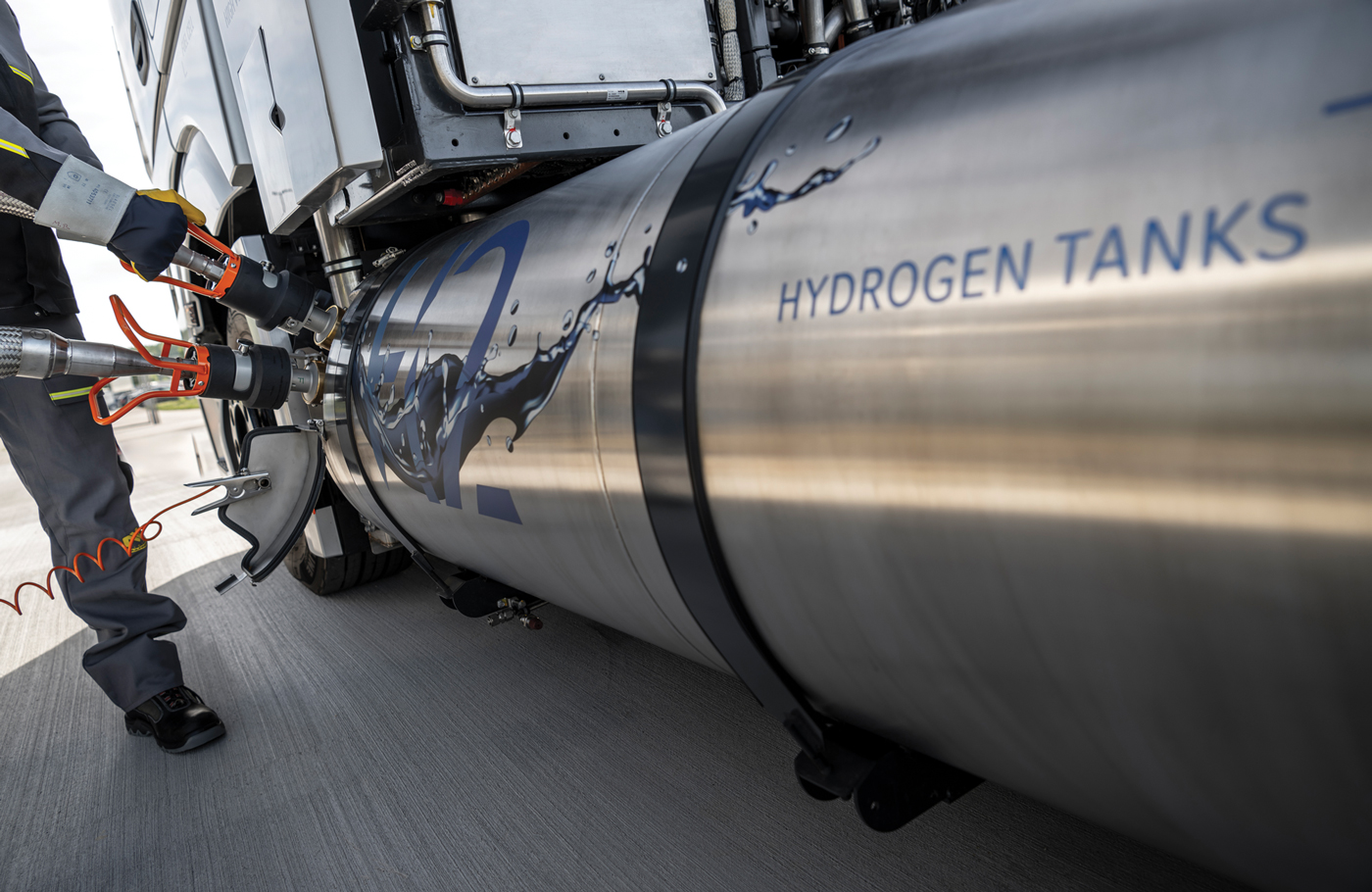Selectivity needed when making and using Hydrogen as fuel
Selectivity needed when making and using Hydrogen as fuel
South Africa has announced sweeping plans to develop its hydrogen industry, positioning itself to become a global hydrogen hub. But new research suggests that leaked hydrogen gas (and leaks are inevitable) has a far greater greenhouse effect than we previously thought. We should be very careful about where and how we use hydrogen, writes NEIL THOMAS STACEY.
In his 2022 State of the Nation address, Cyril Ramaphosa announced a R270 billion investment to develop a hydrogen pipeline. Shortly after, Minister of Higher Education, Science, and Innovation Blade Nzimande launched South Africa’s Hydrogen Society Roadmap, which proposes that hydrogen be used throughout the economy – from heavy industry to shipping and aviation, and even for personal and public transport.
The private sector has followed the government, with Anglo-American unveiling a mining truck powered by hydrogenproduced by electrolysis from solar power.
The switch to hydrogen will not be simple. Hydrogen requires extreme storage conditions, and each step of its production and use introduces energy inefficiencies. It remains to be seen whether hydrogen will be more efficient or cost-effective than other ways of generating electricity from renewable sources.
There is another mounting concern, meanwhile, regarding hydrogen’s widespread use: its global heating effect.
Hydrogen’s greenhouse effect
Hydrogen acts as an indirect greenhouse gas, mainly by slowing down the breakdown of methane, which has powerful direct greenhouse gas effects. This has been known for a while, although the effect has been considered negligible.
In recent research commissioned by the UK government, researchers from the universities of Cambridge and Reading have now re-examined hydrogen’s greenhouse gas effects, factoring in atmospheric layers not previously considered. They found that hydrogen’s Global Warming Potential (GWP) is more than double previous calculations.
GWP is a ratio of the global warming effects of a particular gas to those of an equivalent mass of carbon dioxide (CO2), while different greenhouse gases exert their effects over different time periods. Hydrogen’s GWP-20 (its effect over 20 years) is now estimated at 33 and ranges between 20 and 44. This means that over the course of the next 20 years, each tonne of hydrogen entering the atmosphere will cause approximately 33 times as much global warming as each tonne of CO2. Over a time period of 100 years, hydrogen’s GWP-100 ranges between 6 and 16.
These alarming statistics suggest that we should re-examine some of our plans for using hydrogen to replace fossil fuels.


Atomic escape artist
Hydrogen leaks are not the same as fossil fuel emissions. Hydrogen is expensive, so producers have an incentive to keep leakage as low as possible. By contrast, every time we burn fossil fuel, CO2 is emitted.
Hydrogen, however, is an escape artist. It is a tiny molecule which can get through all kinds of materials that are considered airtight. Some leakage is unavoidable no matter what the application. Hydrogen can even pass through solid steel (albeit slowly). It can be leaked through imperfectly sealed or damaged equipment, and released either as waste gas or during the shutdown or start-up of a plant.
Different industries have different leakage rates, which are affected by the scale of the operation, duration of storage, and piping distance. As equipment ages, leakage rates worsen.
The rule of thumb across industry is that leakage tends to be somewhere between one and 10%. Currently, hydrogen is seldom stored for long or piped over long distances. When it is stored, it is on a very large scale, in tightly managed or industrial settings at the upper end of technical expertise.
But there are some applications where leakage is more likely. The Hydrogen Society Roadmap proposes that hydrogen should be used for long-term energy storage, exported by boat, piped long-distance across South Africa, and used to power vehicles.
Many of these uses could result in leakage rates far higher than industry norms; 10% could be a conservative estimate of the overall leakage in the hydrogen economy as described in the Hydrogen Society Roadmap. Progress towards reducing leaks will likely be gradual – we have been trying to minimise gas leakage in industry for almost two centuries, so there is unlikely to be any sudden technological leap forward.
So how much global warming would our hydrogen economy be causing, and are there alternatives we should prioritise instead?
How should we use hydrogen?
For applications with excessively high leakage, hydrogen’s global warming effects are comparable to those of fossil fuels, while for applications with minimal leakage the effects are a tiny fraction of those of fossil fuels, even if the term “zero-emissions” is still not applicable. This means we should be highly selective about where we use hydrogen.
Retail- or household-scale applications of hydrogen would require complex infrastructure that would leak at distressing rates, exacerbated by the need for several storage points.
As a result, these applications might heat the planet almost as much as the fossil fuels they are replacing, and should not be considered environmentally friendly, even if they are carbon-free.
Industrial-scale hydrogen applications requiring storage and long-range distribution are more feasible, but will still have not insignificant global warming effects. These should be considered as a last resort, to be used when feasible alternatives are not available and with careful consideration of leakage rates. In cases where hydrogen use is unavoidable, it should be produced on-site and used directly to minimise leakage.
How much global warming might hydrogen cause?
This depends on the specific uses of hydrogen. But we can get an idea of a 20-year global warming effect compared to the tailpipe CO2 emissions associated with standard fossil fuels (namely coal, methane, and diesel fuel). The results of a simple calculation for a molecule of each fuel are shown below.
| Fuel | Carbon | Methane | Diesel | Hydrogen (1% leakage) | Hydrogen (10% leakage) | Hydrogen (20% leakage) | Hydrogen (30% leakage) |
| GWP of CO2 emissions per GJ of energy | 122 | 55 | 74 | 0 | 0 | 0 | 0 |
| GWP of hydrogen leaks per GJ | 0 | 0 | 0 | 3 | 31 | 68 | 116 |
| Total GWP per GJ of energy | 122 | 55 | 74 | 3 | 31 | 68 | 116 |
Above: Comparison of estimated GWP-20 (Global Warming Potential, over 20 years) for fuels based on tailpipe CO2 emissions and assumed hydrogen (H2) leakage rates (Author’s calculations).
The values shown in this table are greatly simplified. For fossil fuels, GWP includes only the direct tailpipe CO2 emissions, not the overall emissions for the full supply chain. All three fossil fuels have additional emissions throughout their supply chains, as well as some methane leakages at their points of extraction and a swathe of other environmental effects.
On the other side of the equation, the calculation for hydrogen only includes leakage, omitting the source of energy used for manufacturing. So, this number is applicable only for the idealised scenario where hydrogen is produced entirely from renewables, which will not be the case for the foreseeable future.
Currently, virtually all of South Africa’s hydrogen is considered to be “grey”, or produced from fossil fuels without carbon capture. The roadmap plans a gradual transition, first to “blue” hydrogen, which is produced from fossil fuels but with carbon capture, and then only much later to predominantly “green” hydrogen. The carbon capture processes for blue hydrogen involve additional energy-intensive industrial processes. These do not capture all CO2 produced, so blue hydrogen has a global warming footprint considerably higher than shown in the comparison above.
Regardless of the simplifications, the above calculations illustrate that the cleanness of hydrogen as a fuel doesn’t just depend on how it is made, but also on how it is used.
Neil Thomas Stacey is a scientist in Wits University’s Chemical Engineering department. The original version of this article first appeared on GroundUp.
Published by
Focus on Transport
focusmagsa




